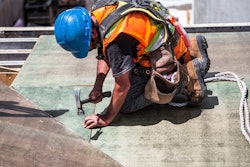
The recent UN IPCC report puts global climate risk at a crisis point. Sustainability concerns are now critical throughout the business in the face of rising expectations from customers, employees and investors alike. Procurement is no exception, where the challenge becomes how to accurately identify more sustainable products and services, while also reducing cost and meeting performance needs. How can buyers make responsible choices without relying on unverified, or false product claims, also known as greenwashing?
Here's how the IT hardware category is driving the need for tools to help purchasers cut through the greenwash when specifying computers and other electronics. Top of mind are issues like chemical content, battery life and whether products are made under ethical working conditions.
The complexity of IT and the rise of greenwashing
As sustainability becomes more important, suppliers are keen to present more responsible product options. But, considering the industry access and specialist expertise required to assess electronics and their supply chains, the risk for greenwashing is as relevant as ever. In fact, a 2020 EU study found that as much as 42% of environmental claims online were either misleading, or false!
In IT, products and their supply chains can be summed up in one word - complexity.
Computers, tablets and other digital devices contain hundreds of components from multiple suppliers, making accurate assessment and insights beyond the capacity of most IT buyers.
As a result, purchasers are expected to trust unverified product claims and manufacturer declarations to assess product and supply chain sustainability. Our years of IT verification work show that while some product claims are accurate, many are unverified, inaccurate or simply false - in other words, subject to greenwashing.
The case of battery life
To illustrate, let’s return to the issue of computer battery life. In 2020, several notebook computers were claiming a battery life of up to 800 charges, but that barely reached 300 cycles when subject to testing by accredited verifiers who specialize in product assessment. However, standard industry practice is to test only up to 300 cycles.
Clearly, for organizations buying technology for thousands of employees, this kind of inaccuracy can be damaging to both sustainability efforts and bottom-line outcomes.
So, when it comes to IT procurement, the question becomes how to verify product and supply chain sustainability claims. What looks like a sustainable choice on the surface should also be backed up by independent proof.
Hidden risks in the supply chain
Sustainability risk isn’t limited to product content like batteries. The bulk of a computer’s lifetime sustainability impact -around 70-80%- lies embedded in the supply chain, before that computer ever reaches the desktop. Issues like working conditions and forced labor, along with environmental impact in manufacturing, are all critical to the lifetime footprint. Around 80% of a computer’s lifetime carbon emissions occurs in the manufacturing phase.
Compounding the problem, a recent survey of purchasers worldwide found that almost two-thirds of responding organizations have minimal or no sustainable procurement criteria that reach into the supply chain. For better sustainability outcomes, purchasers need to leverage their influence through specifications and signaling to impact the manufacturing phase.
The risks of greenwash and unverified claims are clear. The question is what tools and systems are effective in helping purchasers know the real sustainability attributes of the products they buy and the supply chains behind them?
Independent verification critical for lowering risk of greenwash
In a complex category like IT, access and expertise are something beyond the reach of the vast majority of organizations. But, it’s exactly large-scale procurement that has the leverage to directly impact how industry responds to robust sustainability criteria.
Ecolabels are designed to make sustainability easy. Do they work?
Ecolabels are a tool to make sustainable procurement decisions easier. A good ecolabel or product certification can guide purchasing decisions toward products and suppliers that enable meaningful sustainability impacts. Robust ecolabels can also help organizations reduce the environmental and supply chain social responsibility risks that are embedded in the products they source and manage.
But, just like the products themselves, all ecolabels are not equal.
Not all ecolabels include verification or hold industry accountable
Given that independent verification is a critical precursor to choosing more sustainable products, it’s important to realize that a lot of ecolabels simply don’t include independent verification as a mandatory requirement in their systems. Verification is difficult work that demands industry access and specialist expertise by independent, accredited factory and supply chain inspectors and product testers. This kind of commitment is outside the scope of many ecolabels on the market today.
Even if the criteria set seem relevant, some ecolabels allow manufacturers to simply declare compliance with those criteria, without requiring any independent verification. This kind of system only perpetuates the expectation that purchasers should trust unverified claims. The ecolabel then is simply a framework for listing self-declared products and the risk for greenwashing remains.
For independent verification to have the desired impact, it must be required for every product model that carries the label or certification. This process is also critical for identifying non-conformities, and in turn, holding product manufacturers accountable for correcting identified problems.
3 questions purchasers need to ask when choosing an ecolabel
When considering an ecolabel for choosing more sustainable IT or even other categories, there are three critical aspects that an ecolabel must cover in order to deliver the credibility necessary to drive meaningful impact -- criteria, verification and accountability.
If you’re in procurement, here are the three questions to ask when evaluating any ecolabel:
- Up-to-date environmental and social sustainability criteria? Science-based, covering multiple attributes beyond legal requirements, with clear testing thresholds.
- Mandatory independent verification of compliance? Carried out on all certified products and in the supply chain by an independent party that doesn’t represent brands or manufacturers.
- A system of industry accountability and consequences? A monitored, corrective action system in place with consequences for non-compliance.
To reduce your risk of greenwash and drive true sustainability progress, ecolabels can be a valuable tool. Knowing how to evaluate them and select those that verify compliance and hold industry accountable is the way forward for organizations wanting to create sustainability benefits they can confidently stand behind.
















![Pros To Know 2026 [color]](https://img.sdcexec.com/mindful/acbm/workspaces/default/uploads/2025/08/prostoknow-2026-color.mduFvhpgMk.png?ar=16%3A9&auto=format%2Ccompress&bg=fff&fill-color=fff&fit=fill&h=135&q=70&w=240)

